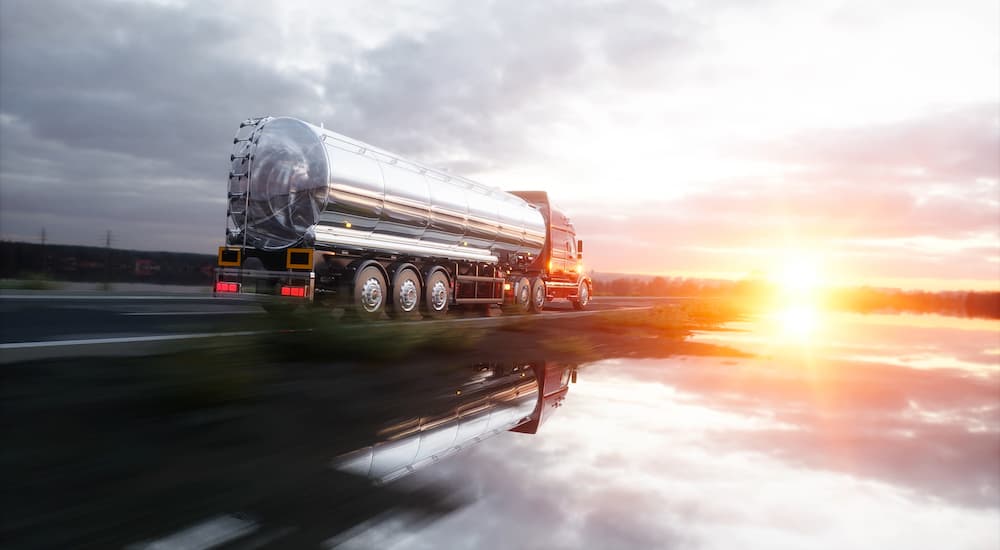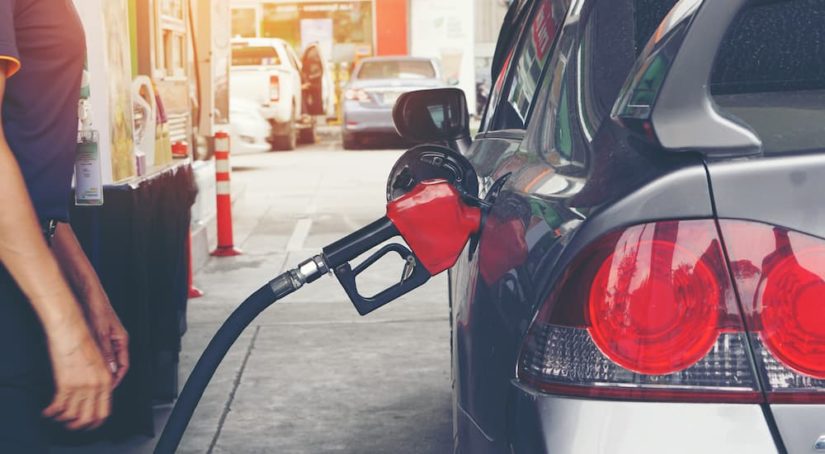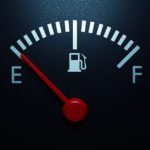You pull up to the gas tank and are asked to choose between the three grades of fuel. You go to hit “Regular” like always, but hesitate as you find yourself wondering if maybe you should treat your car to some premium fuel. If you have ever found yourself in this situation, you might be wondering what those different types of fuel are for and how to choose between them. In general, you can go ahead and press the button for regular fuel––your car won’t mind. Unless you are driving one of the handful of cars designed for premium fuel, using anything but regular fuel is simply a waste of your hard-earned money. However, if your car does require premium fuel, using regular fuel can reduce performance and even damage the engine.
While gasoline may seem like a simple topic, there are actually a lot of factors that go into choosing the correct fuel. You can find the right grade of gas to use in your car by simply checking the owner’s manual to see what type of fuel the manufacturer recommends, but the full story as to why that is the right grade of gas can be complex and takes into account octane ratings, additives, detergents, and more. You may not expect it, but some brands of gas can even do a better job keeping your engine clean! So, what do you need to know before filling up your car?
What Is Premium Fuel?
Despite the fancy names listed on the pump, the label that really matters is the octane rating. While the exact number can vary slightly by state, premium gas is over 90 octane, while regular gas is commonly 87 octane. The third option, midgrade gas, is actually a blend of premium and regular gas and has an octane rating somewhere in the middle. In fact, midgrade gas is usually mixed at the pump, and you can even mix it yourself by filling it up with a combination of regular and premium fuel in the right ratio. While doing this is usually a waste of time, it is an option if your vehicle requires an uncommon octane rating.
Using the correct octane rating for your engine is crucial, but the higher-grade gasoline usually isn’t any better in terms of actual fuel quality than the lower-grade gasoline. What really determines fuel quality is the manufacturing process and the included additives. While it might sound odd, modern gasoline isn’t actually pure gasoline. Every manufacturer adds its own blend of additives designed to reduce toxic emissions, improve performance, and keep your engine clean. Some of these blends are better than others, which means it is entirely possible for “Regular” gasoline from one manufacturer to be higher quality than “Premium” gasoline from another.
Why Is Octane Important?
If premium fuel isn’t actually any higher quality than regular fuel, why does it exist? The answer is octane ratings. Higher octane fuel can allow an engine to develop more power, although contrary to the common misconception, higher octane fuel isn’t actually more powerful than lower octane fuel. Technically, octane is a specific hydrocarbon molecule, but when it comes to talking about gasoline, the word is used to describe the fuel’s Anti-Knock Index (AKI) rating. There are actually a couple of different ways to measure octane, and most of the world labels gasoline using the Research Octane Number (RON) rather than the AKI. The AKI is usually a slightly lower number than the RON, which should be kept in mind if you ever find yourself looking at European octane ratings.
So, how does octane allow an engine to develop more power if the fuel itself isn’t any more powerful? In a gasoline engine, a fuel-air mixture is compressed and then ignited by a spark. The more the mixture can be compressed, the more power the engine can create. However, if it is compressed too far, the mixture will self-ignite before the spark can be applied––a condition known as knock. Increasing the octane rating allows the engine to compress the mixture more before knock occurs.
The vast majority of modern gasoline engines are designed for 87 octane, but many high-performance engines have higher compression ratios and require higher octane fuel. Using a lower-octane fuel in these engines can result in knock, so any vehicle with such an engine should only be fed premium gasoline. This is why it is critical to check the manufacturer’s required octane rating whenever you fill up a new vehicle for the first time.
There are some modern performance engines that will have both a “required” and a “recommended” octane rating listed. These engines use sophisticated sensors and computers to detect what kind of fuel is being used and modify the engine timing. This will ignite low octane fuel earlier before it can self-ignite while allowing high-octane fuel to be compressed all the way. Engines with this sort of technology will produce different amounts of power depending on the fuel used. The 2.5L SKYACTIV Turbo engine in the 2021 Mazda CX-30, for example, will produce 250 horsepower with premium fuel but only 227 horsepower with regular fuel.

Top Tier Gasoline
If you are looking for high-quality fuel for your car, look for brands that sell fuel labeled “Top Tier Detergent Gasoline.” While some additives are legally required by the EPA, Top Tier fuel is a more stringent industry standard first developed by BMW, GM, Honda, and Toyota in 2004. More automotive brands have since joined the group, including Ford, Mercedes, Stellantis, and Volkswagen. In 2017, Top Tier expanded to cover diesel as well as gasoline, giving all drivers a clear label to look for when searching for high-quality fuel.
Top Tier gasoline requires roughly three times the level of additives mandated by the EPA, and an independent 2016 study conducted by AAA revealed that non-Top Tier gasoline caused an incredible 19 times more engine deposits after just 4,000 miles of simulated driving. Only around one-third of the fuel sold in the United States meets Top Tier standards, but all brands selling Top Tier fuel can be found on the Top Tier website. While even some Top Tier brands are better than others, looking for a Top Tier label is the easiest way to make sure you are filling your car with high-quality gasoline.
Adding Lead and Ethanol to Gasoline
Today, virtually all road gasoline sold in the United States is “unleaded.” Burning lead and releasing it into the atmosphere seems like a fairly obvious action to avoid, so why did gasoline use to have lead in it? In 1921, GM engineers discovered that adding tetraethyl lead substantially raised the fuel’s octane rating, providing a cheap way to increase engine performance. In fact, leaded gas can be around 20 octane higher than unleaded gas, and it is still used in most piston aircraft engines, where the added performance is vital. The use of leaded gas was part of the reason why classic muscle cars from the 1960s were so much more powerful than many models from the 1970s when unleaded gas was introduced.
Ethanol is another common fuel additive that has raised its own controversy. While ethanol is not harmful to humans and is a renewable fuel, it is not an ideal fuel for a number of reasons. Most importantly, ethanol has around 30% less energy than gasoline, which means more fuel needs to be burned to produce the same amount of work. The 2022 Ford F-150, for example, is available with a number of engine options that can burn both regular E10 (10% ethanol) gas and E85 (85% ethanol). With E10, the 5.0L V8 is rated for 20 MPG combined and a range of up to 520 miles, but with E85, those numbers fall to just 14 MPG combined and a range of up to 364 miles.
However, ethanol actually has a higher octane rating and burns cooler than pure gasoline. In fact, pure ethanol is 100 octane, and E10 gasoline is usually only 84 octane before the ethanol is added. A good E85 fuel can reach 112 octane, and such blends are commonly used in heavily modified performance cars as a cheaper alternative to high-octane race fuel. Unfortunately, high-ethanol blends are not as stable or well-regulated as gasoline, and fuel labeled E85 can have an ethanol content as low as 51% at the pump.

Give Your Car the Fuel It Wants
While it may seem like you are doing your car a favor by springing for some more expensive gasoline, you won’t see any more performance, efficiency, or longevity by using a higher grade fuel than the manufacturer recommends. While some cars do require higher grade fuel to function properly, they are few and far between, and you likely know if you own one of them. If you want to give your car a real treat, put the extra money you would have spent at the pump towards a good cleaning or some preventative maintenance.



